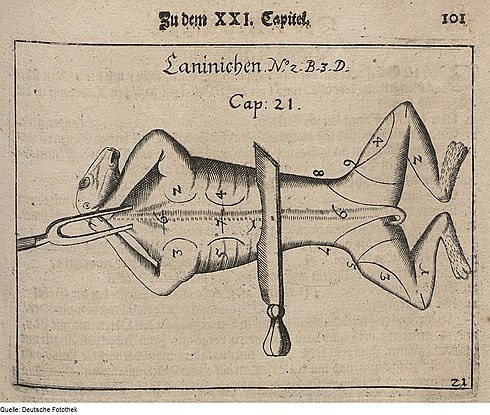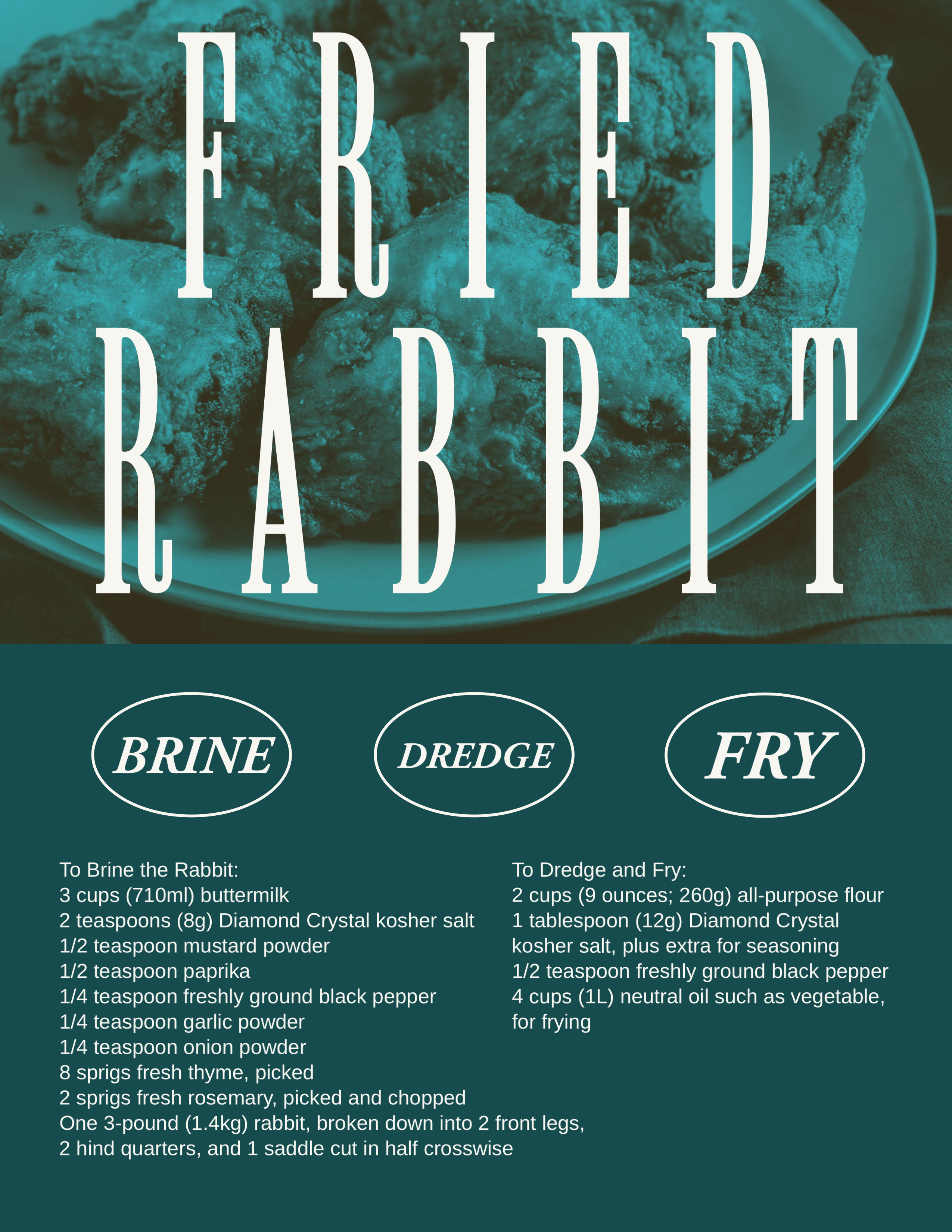A guide to cutting up a whole rabbit for braising, frying, or roasting
by Sasha Marx, originally published Sep. 29, 2021 by Serious Eats

Read step-by-step instructions below, or watch this video:
The Tools

A chef’s knife, Western-style boning knife, or Japanese-style honesuki poultry boning knife are all great options, but you should use the sharpest blade in your kitchen. You can get by with just a knife, but having a meat cleaver or a pair of sturdy kitchen shears on-hand makes cutting through bone and cartilage a breeze, and helps you maintain that sharp edge of your knife.
Sharp objects aside, it’s good practice to set up an orderly prep station when cutting up proteins. A well-stabilized cutting board and a rimmed baking sheet for holding the rabbit parts as you work so you can keep that cutting board free of clutter should do the trick.
How to Cut Up a Rabbit Into Six Serving Pieces

A six-piece breakdown is one of the simplest ways to process a whole rabbit for braising, frying, or roasting in parts. This method yields six bone-in pieces of rabbit—two front legs, two hind leg quarters, and two saddle portions—as well as two boneless strips of belly that can be cooked separately as a little kitchen snack but aren’t very substantial, and the ribcage and backbone for stock.
Start by checking the rabbit cavity for any hidden offal treasures. The kidneys, liver, and heart are sometimes included; just set those aside if that’s the case. You can skewer and grill them as a snack later. With the cavity cleaned out, give the rabbit a pat-down with some paper towels or a clean kitchen towel. You don’t want things slipping and sliding on a cutting board while butchering.
Step 1: Remove the Front Legs

Position the rabbit on its side, so that the front leg is closest to you. Lift the leg up and away from the body of the rabbit, so that you can see where the shoulder joint connects to the cage. Cut around the leg, keeping the knife edge against the cage. The leg will come off easily.
Flip the rabbit over onto its other side, and repeat the cutting process. Set the front legs aside on your baking sheet.
Step 2: Remove the Hind Legs

Removing the back legs of a rabbit is very similar to the process of removing the legs on a chicken. Hold the bottom of one leg with your off-hand, and pull the leg outward, away from the body, so that you can cut between the area where the leg meets the body.
Hold the body steady with one hand and with the other grab the top part of the leg and twist downward, away from the body, until the femur ball joint pops out of the socket. Now use your knife to remove the leg by cutting through the exposed joint and riding the blade down the spine to the tailbone. Repeat with the other leg. If you plan to braise the rabbit, you can separate the leg quarters into leg and thigh pieces, just as you would when separating the thigh from the drumstick on a chicken leg.
Step 3: Remove the Belly

With all four legs removed, you’re left with the rabbit’s midsection. You’ll notice two flappy bits of belly hanging off of the rabbit’s meaty “saddle.” Unlike pork or lamb belly, there isn’t much meat or fat to rabbit belly. However, it’s still pretty tough, when compared to the loin, and it’s quite thin and hangs off the body, which means it won’t cook at the same rate as the loin. As a result, it’s best to remove the belly entirely. Hold the flap of meat up with your non-dominant hand and slice it off, making sure not to take any of the loin with it. As with the offal, you can cook the belly up as a snack.


